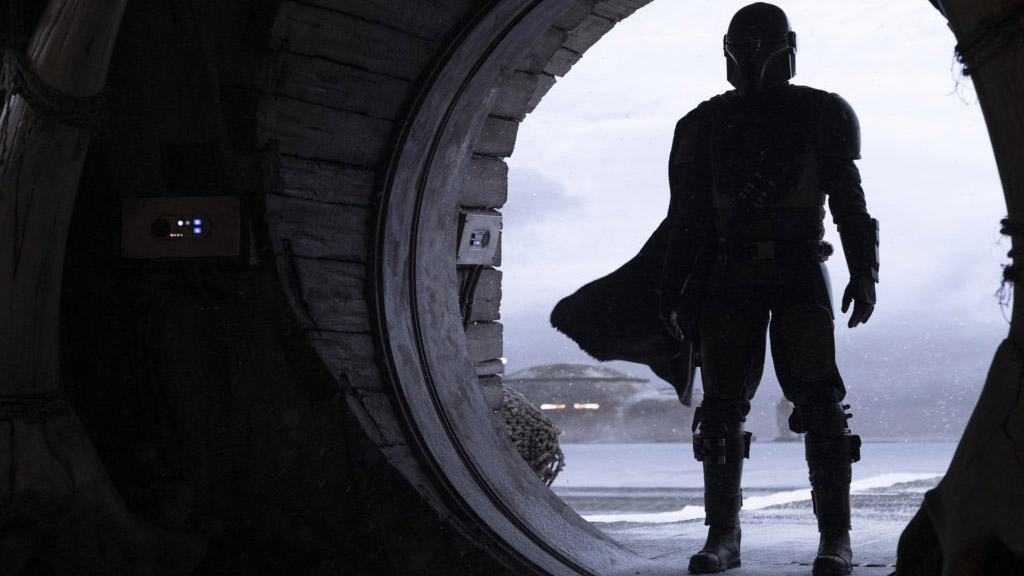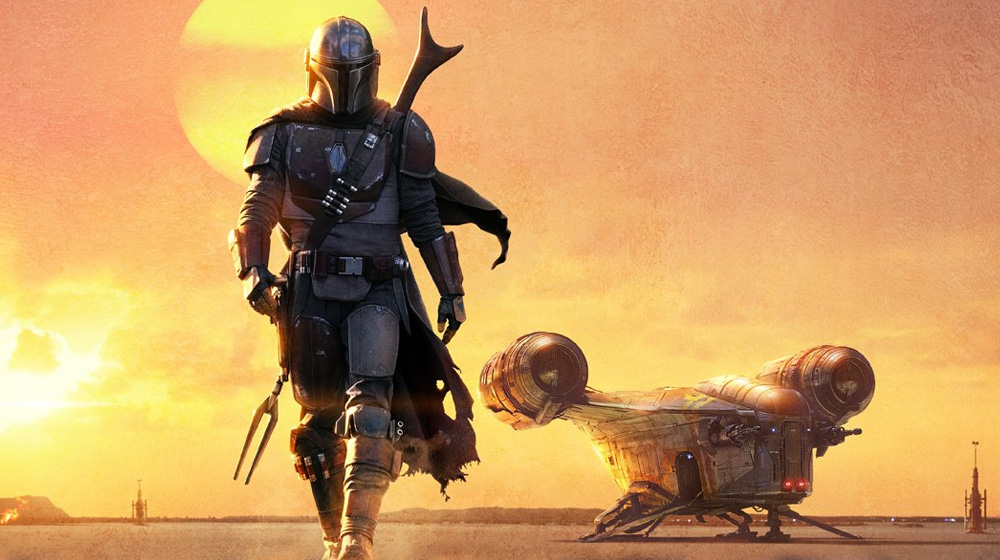'Star Wars' Gets the Parsec Wrong Again in 'The Mandalorian'
In the very first Star Wars live-action TV series, Disney+'s "The Mandalorian," we hear that the bounty hunter the show is named after is "the best in the parsec."
The sci-fi epic has had a history of using — and, many would say, misusing — the word "parsec" since its very beginning.
So, what is a parsec? And what might "Star Wars" think it means this time?
Related: 'The Mandalorian': Here's What We Know So Far About the 'Star Wars' Live Action Show

What is a parsec?
When it comes to expressing the astronomical distances that lie between stars, the unit the average person is likely most familiar with is the light-year, or the distance a ray of light travels in a single Earth year. This amounts to about 6 trillion miles (9.7 trillion kilometers).
However, the unit of astronomical distance used more often in astronomy research is the parsec, which is a portmanteau of "parallax" and "arcsecond." The term comes from the use of triangulation to determine the distance of nearby stars. Specifically, a parsec is the distance to a star whose apparent position shifts by 1 arcsecond (1/3,600 of a degree) in the sky after Earth orbits halfway around the sun.
A parsec amounts to about 3.26 light-years, or about 19.2 trillion miles (30.9 trillion kilometers).
Get the Space.com Newsletter
Breaking space news, the latest updates on rocket launches, skywatching events and more!
The Kessel Run
In "Star Wars: A New Hope," the scoundrel Han Solo brags that his ship the Millennium Falcon "made the Kessel Run in less than 12 parsecs." For years, fans nitpicked that a parsec if a unit of distance, not time, so Han's boast made no sense. When "Star Wars: The Force Awakens" repeated Han's claim, famed astrophysicist Neil deGrasse Tyson argued the space opera was "unashamed of inanity."
According to the comic book adaptation of the movie, Star Wars' creator George Lucas claimed the seeming gaffe was intentional. The blunder was meant to show that Han "was something of a bull artist who didn't always know precisely what he was talking about."
However, "Solo: A Star Wars Story" revealed that Han meant what he said after all. In the film, he flies the Millennium Falcon from Kessel through a cosmic maelstrom on a hazardous shortcut that was only about 12 parsecs long. As Lando Calrissian pointed out in that film, much safer versions of the Kessel Run were normally at least 20 parsecs.
Amusingly, in "Solo: A Star Wars Story," Chewbacca pointed out that Han's route was actually slightly more than 12 parsecs, but in "Star Wars: A New Hope," the smuggler is already exaggerating that he did it in less than 12.

"Best in the parsec"
The upcoming series "The Mandalorian" is about a lone gunfighter in the outer reaches of the galaxy, a bounty hunter far away from the authority of the New Republic. The series is set after "Star Wars: Return of the Jedi" and some time before the events of "The Force Awakens," so in the chaos after the fall of the Empire and before the emergence of the First Order.
The planet Mandalore and its warrior people are well-known elements of "Star Wars" lore. In the original and prequel films, both Jango Fett and his clone/son Boba Fett wore Mandalorian armor, although they were not from that planet.
In the trailers for "The Mandalorian," a mysterious character played by German director Werner Herzog noted that the bounty hunter the series is named after is "the best in the parsec."
"Only Imperial stormtroopers are so precise"
The problem "The Mandalorian" raises is that "Solo: A Star Wars Story" has already established that a parsec is a unit of distance. Saying the bounty hunter of "The Mandalorian" is the best in the parsec would similar to saying that he is the best in the light-year.
What would make more sense is if the bounty hunter was said to be "the best around for a parsec." But a parsec is not even all that great a distance when it comes to the kind of astronomical scales one might expect from a sci-fi epic set in a galaxy far, far away. For example, the nearest star to our sun, Proxima Centauri, is only about 1.3 parsecs away.
Still, many words in English have more than one meaning. The same might hold true for "parsec" in Basic, the most prevalent language in the galaxy in "Star Wars," depending on the context. Or, as Obi-Wan Kenobi might say, what was said about the Mandalorian may be true, from a certain point of view.
- 'Star Trek' Animated Series Announced for Nickelodeon
- Final 'Star Wars: The Rise of Skywalker' Trailer
- Ming-Na Wen Joins 'Star Wars: The Mandalorian'
Follow Charles Q. Choi on Twitter @cqchoi. Follow us on Twitter @Spacedotcom and on Facebook.
Join our Space Forums to keep talking space on the latest missions, night sky and more! And if you have a news tip, correction or comment, let us know at: community@space.com.

Charles Q. Choi is a contributing writer for Space.com and Live Science. He covers all things human origins and astronomy as well as physics, animals and general science topics. Charles has a Master of Arts degree from the University of Missouri-Columbia, School of Journalism and a Bachelor of Arts degree from the University of South Florida. Charles has visited every continent on Earth, drinking rancid yak butter tea in Lhasa, snorkeling with sea lions in the Galapagos and even climbing an iceberg in Antarctica. Visit him at http://www.sciwriter.us









